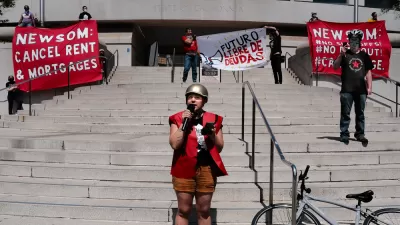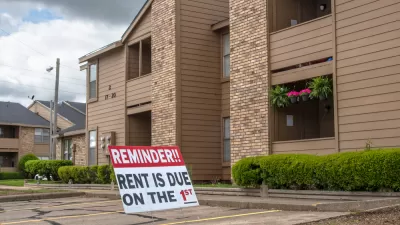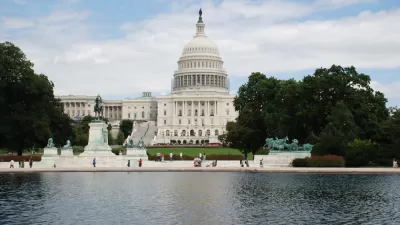To ensure families stay in their homes and stay safe during the COVID-19 pandemic, the federal government should extend the CDC's eviction moratorium and other rent relief measures through the new year.

To slow the spread of COVID-19 and protect families during the pandemic, the Centers for Disease Control and Prevention (CDC) passed an eviction moratorium in September, prohibiting landlords from evicting renters facing financial hardship. The moratorium, set to expire at the end of the year, has provided a lifeline for families who face losing their homes.
Things haven't improved for much of the country. In November, a third of Americans said they feared facing eviction or foreclosure in the next few months. With the moratorium's expiration and the end of other financial support like extended unemployment benefits looming, many Americans face deep financial uncertainty in the new year. Without a renewed moratorium and rent relief, argues Mary K. Cunningham, people who owe back rent and those having trouble making rent payments will continue to face housing insecurity as we head deeper into winter. Even with the current moratorium in place, tens of thousands of evictions have still been filed during the pandemic as landlords seek out loopholes, and without full rent relief, many tenants are sinking deeper into debt.
Federal relief would also help small landlords who rent to low-income people of color, many of whom risk losing their properties to large companies. The accelerated loss of affordable housing to redevelopment could have a powerful impact on future housing availability for low- and middle-income families.
FULL STORY: Extending the CDC Eviction Moratorium Would Keep Families Housed and Prevent the Spread of COVID-19

Study: Maui’s Plan to Convert Vacation Rentals to Long-Term Housing Could Cause Nearly $1 Billion Economic Loss
The plan would reduce visitor accommodation by 25,% resulting in 1,900 jobs lost.

North Texas Transit Leaders Tout Benefits of TOD for Growing Region
At a summit focused on transit-oriented development, policymakers discussed how North Texas’ expanded light rail system can serve as a tool for economic growth.

Why Should We Subsidize Public Transportation?
Many public transit agencies face financial stress due to rising costs, declining fare revenue, and declining subsidies. Transit advocates must provide a strong business case for increasing public transit funding.

How to Make US Trains Faster
Changes to boarding platforms and a switch to electric trains could improve U.S. passenger rail service without the added cost of high-speed rail.

Columbia’s Revitalized ‘Loop’ Is a Hub for Local Entrepreneurs
A focus on small businesses is helping a commercial corridor in Columbia, Missouri thrive.

Invasive Insect Threatens Minnesota’s Ash Forests
The Emerald Ash Borer is a rapidly spreading invasive pest threatening Minnesota’s ash trees, and homeowners are encouraged to plant diverse replacement species, avoid moving ash firewood, and monitor for signs of infestation.
Urban Design for Planners 1: Software Tools
This six-course series explores essential urban design concepts using open source software and equips planners with the tools they need to participate fully in the urban design process.
Planning for Universal Design
Learn the tools for implementing Universal Design in planning regulations.
City of Santa Clarita
Ascent Environmental
Institute for Housing and Urban Development Studies (IHS)
City of Grandview
Harvard GSD Executive Education
Toledo-Lucas County Plan Commissions
Salt Lake City
NYU Wagner Graduate School of Public Service





























